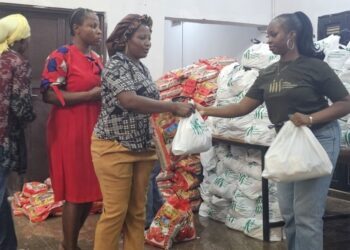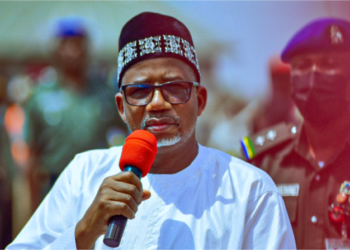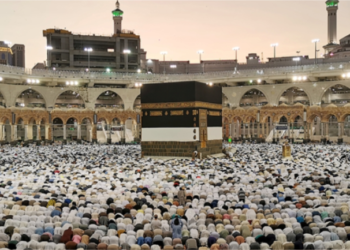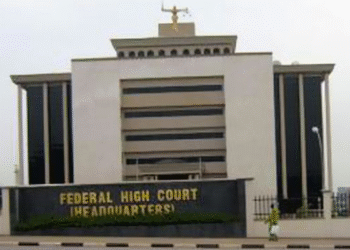Vladimir Putin authorised what he called a special military operation
in eastern Ukraine.
Here is a timeline of the main events in Ukraine’s political history
since it won independence from Moscow in 1991.
1991: Leonid Kravchuk, leader of the Soviet republic of Ukraine,
declares independence from Moscow. In a referendum and presidential
election, Ukrainians approve independence and elect Kravchuk
president.
1994: Leonid Kuchma beats Kravchuk in a presidential election deemed
largely free and fair by observers.
1999: Kuchma is re-elected in a vote riddled with irregularities.
2004: Pro-Russian candidate Viktor Yanukovich is declared president
but allegations of vote-rigging trigger protests in what becomes known
as the Orange Revolution, forcing a re-run of the vote. A pro-Western
former prime minister, Viktor Yushchenko, is elected president.
1994: Leonid Kuchma beats Kravchuk in a presidential election deemed
largely free and fair by observers.
1999: Kuchma is re-elected in a vote riddled with irregularities.
2004: Pro-Russian candidate Viktor Yanukovich is declared president
but allegations of vote-rigging trigger protests in what becomes known
as the Orange Revolution, forcing a re-run of the vote. A pro-Western
former prime minister, Viktor Yushchenko, is elected president.
2005: Yushchenko takes power with promises to lead Ukraine out of the
Kremlin’s orbit, towards NATO and the EU. He appoints former energy
company boss Yulia Tymoshenko as prime minister but after in-fighting
in the pro-Western camp, she is sacked.
2008: NATO promises Ukraine it will one day join the alliance.
2010: Yanukovich defeats Tymoshenko in a presidential election. Russia
and Ukraine clinch a gas pricing deal in exchange for extending the
lease for the Russian navy in a Ukrainian Black Seaport.
2013: Yanukovich’s government suspends trade and association talks
with the EU in November and opts to revive economic ties with Moscow,
triggering months of mass rallies in Kyiv.
2014: The protests, largely focused around Kyiv’s Maidan square, turn
violent. Dozens of protesters are killed.
February 2014: The parliament votes to remove Yanukovich, who flees.
Within days, armed men seize parliament in the Ukrainian region of
Crimea and raise the Russian flag. Moscow annexes the territory after
a March 16 referendum which shows overwhelming support in Crimea for
joining the Russian Federation
April 2014: Pro-Russian separatists in the eastern region of Donbass
declare independence. Fighting breaks out, which has continued
sporadically into 2022, despite frequent ceasefires.
May 2014: Businessman Petro Poroshenko wins a presidential election
with a pro-Western agenda.
July: 2014: A missile brings down passenger plane MH17 en route from
Amsterdam to Kuala Lumpur, killing all 298 people on board.
Investigators trace back the weapon used to Russia, which denies
involvement.
2017: An association agreement between Ukraine and the EU opens
markets for free trade of goods and services, and visa-free travel to
the EU for Ukrainians.
2019: A new Ukrainian Orthodox church wins formal recognition,
angering the Kremlin
Former comic actor Volodymyr Zelenskiy defeats Poroshenko in an April
presidential election on promises to tackle corruption and end the war
in eastern Ukraine. His Servant of the People party wins a July
parliamentary election.
U.S. President Donald Trump asks Zelenskiy in July to investigate Joe
Biden, his rival in the U.S. presidential race, and Biden’s son Hunter
over possible business dealings in Ukraine. The call leads to a failed
attempt to impeach Trump.
March 2020: Ukraine goes into its first lockdown to curb COVID-19.
June 2020: The IMF approves a $5 billion lifeline to help Ukraine
stave off default during a pandemic-induced recession.
Jan. 2021: Zelenskiy appeals to Biden, now U.S. president, to let
Ukraine join NATO.
Feb. 2021: Zelenskiy’s government imposes sanctions on Viktor
Medvedchuk, an opposition leader and the Kremlin’s most prominent ally
in Ukraine.
Spring 2021: Russia masses troops near Ukraine’s borders in what it
says are training exercises.
Oct. 2021: Ukraine uses a Turkish Bayraktar TB2 drone for the first
time in eastern Ukraine, angering Russia.
Autumn 2021: Russia again begins massing troops near Ukraine.
Dec. 7, 2021: Biden warns Russia of sweeping Western economic
sanctions if it invades Ukraine.
Dec. 17: Russia presents detailed security demands including a legally
binding guarantee that NATO will give up any military activity in
eastern Europe and Ukraine.
Jan. 14: A cyberattack warning Ukrainians to “be afraid and expect the
worst” hits Ukrainian government websites.
Jan. 17: Russian forces start arriving in Belarus, to the north of
Ukraine, for joint drills.
Jan. 24: NATO puts forces on standby and reinforces eastern Europe
with more ships and fighter jets.
Jan. 26: Washington presents a written response to Russia’s security
demands, repeating a commitment to NATO’s “open-door” policy while
offering “pragmatic” discussions of Moscow’s concerns.
Jan. 28: President Vladimir Putin says Russia’s main security demands
have not been addressed.
Feb. 2: The United States says it will send 3,000 extra troops to
Poland and Romania to help shield NATO allies in eastern Europe from
any spillover from the crisis.
Feb. 4: Putin, at the Beijing Winter Olympics, wins Chinese support
for his demand that Ukraine not be allowed to join NATO.
Feb. 7: French President Emmanuel Macron sees some hope for a
diplomatic resolution of the crisis after meeting Putin in the
Kremlin. Macron then visits Kyiv and praises the “sang-froid” of
Zelenskiy and the Ukrainian people.
Feb. 9: Biden says “things could go crazy quickly” as the U.S. State
Department advises Americans in Ukraine to leave immediately. Other
countries also urge their nationals to leave.
Feb. 14: Zelenskiy urges Ukrainians to fly flags and sing the national
anthem in unison on Feb. 16, a date some Western media say Russia
could invade.
Feb. 15: Russia says some of its troops are returning to base after
exercises near Ukraine and mocks Western warnings about a looming
invasion. Russia’s parliament asks Putin to recognise as independent
two Russian-backed breakaway regions in eastern Ukraine.
Feb. 18: U.S. ambassador to the Organisation for Security and
Cooperation in Europe Michael Carpenter says Russia has probably
massed between 169,000-190,000 personnel in and near Ukraine.
Feb. 19: Russia’s strategic nuclear forces hold exercises overseen by Putin.
Feb. 21: Macron says Biden and Putin have agreed in principle to a
summit over Ukraine.
In a televised address, Putin says Ukraine is an integral part of
Russian history, has never had a history of genuine statehood, is
managed by foreign powers, and has a puppet regime. Putin signs
agreements to recognise breakaway regions in eastern Ukraine as
independent and order Russian troops there.
Feb. 22: U.S., UK, and their allies enact sanctions on Russian
parliament members, banks, and other assets. Germany halts the final
certification of the Nord Stream 2 pipeline that was still waiting for
approval.
Putin, in a television address, demands Ukraine demilitarise and says
the Minsk peace agreement over breakaway republics no longer exists,
blaming Kyiv for killing the deal.
Feb. 23: Russian-backed separatist leaders ask Russia for help in
repelling aggression from the Ukrainian army.
Feb. 24: Russian President Putin authorizes “special military
operations” in eastern Ukraine and asks Ukrainian forces to lay down
their arms in a televised address. Russian forces begin missile and
artillery attacks on Ukrainian forces and air bases, striking areas in
major cities. (Reuters/NAN)








